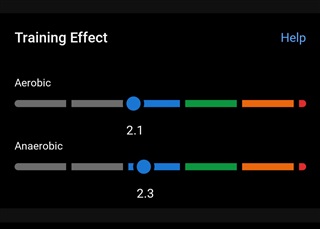Hi,
I know there have been posts about that in the past but no one could really explain this: why the *** does Garmin (F7) qualify interval trainings as aerobic? My example is below. It were fast swimming intervals of 50 m with plenty of rest in between. F7 did notice anaerobic effort but decided the training was primarily aerobic. I did not hit HRZ 5 but I do not think it is really necessary as long as HR spikes are significant. Why I think that, you may ask. Well, it's because 20 days ago I did a long cycling activity which was really easy but it got qualified as mainly anaerobic. There were lots of starts and stops which were the key.
I would love to have my training load balanced. Could any one tell me what is the secret behind the algorithm and how to train anaerobically?
Interval swim:

Easy, long bike:






